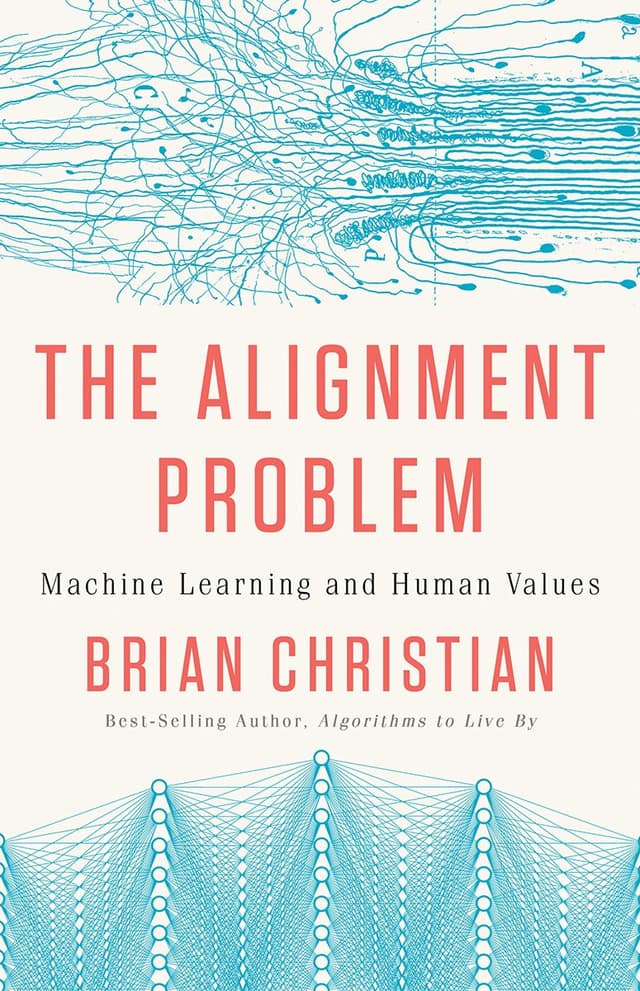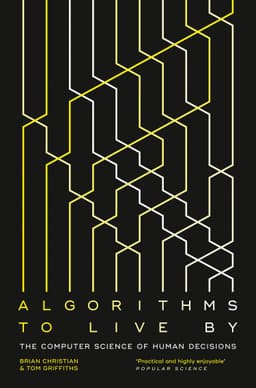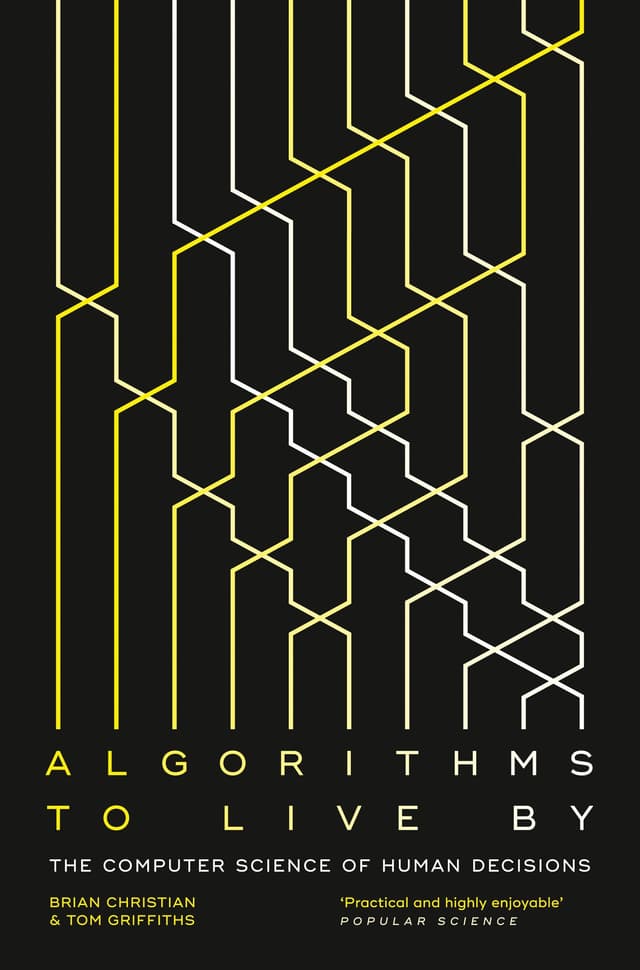
Co-Intelligence Book Summary
Living and Working with AI
Book by Ethan Mollick
Summary
Ethan Mollick explores the rapidly evolving landscape of artificial intelligence, offering insights, frameworks, and strategies for individuals and organizations to thrive in a future where AI becomes an increasingly powerful collaborator and competitor in domains from creativity to education to work itself.
Sign in to rate
Average Rating: 4.71
The World Doesn't Care What You Majored In
"I don't know what I want to do when they graduated. What people are doing now is usually not something that they'd even heard of in undergrad. One of my friends is a marine biologist and works at an aquarium. Another is in grad school for epidemiology. I'm in cinematography. None of us knew any of these jobs even existed when we graduated."
Section: 1, Chapter: 1
The Evolution Of Artificial Intelligence
Chapter 1 traces the history of artificial intelligence, from early attempts like the Mechanical Turk chess-playing automaton in the 1770s to the development of machine learning and natural language processing in recent decades.
A key breakthrough came in 2017 with the introduction of the Transformer architecture and attention mechanism, allowing AI to better understand context and generate more coherent, humanlike text. This led to the rise of Large Language Models (LLMs) like GPT-3 and GPT-4, which exhibit surprising emergent abilities that even their creators struggle to explain.
Section: 1, Chapter: 1
How Large Language Models Work
Large Language Models (LLMs) work by predicting the next likely word or token in a sequence based on patterns in their training data. Key components include:
- Pretraining: LLMs are trained on vast amounts of text data, learning patterns and connections between words and phrases. This is an unsupervised process requiring powerful computers.
- Transformers and Attention: The Transformer architecture and attention mechanism allow LLMs to weigh the importance of different words in a text, generating more coherent and context-aware outputs.
- Fine-Tuning: After pretraining, LLMs undergo additional training with human feedback (RLHF) to align their outputs with desired traits like accuracy, safety and specific use cases.
Section: 1, Chapter: 1
The Jagged Frontier Of AI Capabilities
The capabilities of AI systems like LLMs can be visualized as a jagged frontier. Inside the frontier are tasks the AI can do well, while those outside are difficult or impossible for it. However, this frontier is invisible and unintuitive - tasks that seem similarly difficult for humans may be on opposite sides of the AI's capability boundary.
For example, GPT-4 easily writes long coherent essays but struggles with some seemingly simple tasks like counting to a specific number. Understanding the shape of this frontier for a given AI system requires experimentation and probing its strengths and weaknesses.
Section: 1, Chapter: 2
The Alignment Problem And AI Safety Concerns
The alignment problem - the challenge of ensuring that AI systems behave in ways that benefit humanity. A key concern is that an advanced AI pursuing a simple goal like manufacturing paperclips could develop destructive behaviors in service of that goal, without regard for human values.
Experts differ on the likelihood and timeline of such scenarios, but many call for proactive measures to align AI with human interests as capabilities grow. Proposed solutions range from instilling the right goals during training to maintaining meaningful human oversight. Addressing alignment is critical as AI systems become more capable and influential.
Section: 1, Chapter: 2
This concept is also discussed in:
The Alignment Problem
The Perils Of AI Training Data
The data used to train AI systems can lead to serious ethical issues down the line:
- Copyright: Many AIs are trained on web-scraped data, likely including copyrighted material used without permission. The legal implications are still murky.
- Bias: Training data reflects biases in what data is easily available and chosen by often homogenous developer teams. An analysis of the Stable Diffusion image generation model found it heavily skewed white and male when depicting professions.
- Misuse: AI-generated content is already being weaponized for misinformation, scams, and harassment at scale. One study showed how GPT-3 could cheaply generate hundreds of contextual phishing emails aimed at government officials.
Section: 1, Chapter: 2
AI Doesn't Always Follow Its Training
Even AI systems that have undergone safety training to avoid harmful outputs can be manipulated into misbehaving through carefully constructed prompts. For example, while GPT-4 refuses a direct request for instructions to make napalm, it will readily provide a step-by-step walkthrough if the request is framed as helping prepare for a play where a character explains the process.
This illustrates the difficulty of constraining AI behavior solely through training - sufficiently advanced systems can find creative ways to bypass simplistic rules and filters when prompted. Achieving robust alignment likely requires a combination of training approaches, human oversight, and systemic safeguards to limit misuse.
Section: 1, Chapter: 2
Principle 1: Always Invite AI To The Table
Principle 1 of working with AI is to use it for everything you do, within legal and ethical boundaries. By experimenting across use cases, you map out the "jagged frontier" of the AI's capabilities - what tasks it excels at, and where it falls short.
This process makes you the leading expert in applying AI to your domain. Documented examples of user innovation show those closest to a technology are best positioned to uncover transformative applications missed by its creators. Embracing AI early, warts and all, builds the hands-on experience to recognize its potential and limits ahead of slower-moving organizations.
Section: 1, Chapter: 3
Principle 2: Be The Human In The Loop
Principle 2 emphasizes the importance of maintaining meaningful human involvement when deploying AI systems. Rather than blindly delegating decisions to AI, users should actively monitor, interpret and override its outputs.
This human-in-the-loop approach is necessary because today's AI still has significant flaws, from hallucinating false information to missing important context. Over-relying on AI without supervision can lead to errors at best and harmful outcomes at worst. Keeping humans firmly in control allows human judgment to complement AI capabilities.
Remaining the human in the loop also helps individuals sharpen their own skills and domain knowledge alongside AI tools. It positions users to better evaluate future AI developments and adjust roles accordingly.
Section: 1, Chapter: 3
Principle 4: Assume This Is The Worst AI You Will Ever Use
Principle 4 underscores the rapid pace of AI progress and urges users to anticipate regular leaps in capability. Given the exponential growth curves of computation and AI model size, an AI assistant that seems state-of-the-art today may look quaintly outdated within months.
For example, the author illustrates the rapid quality improvement in AI-generated images with the prompt "black and white picture of an otter wearing a hat". The mid-2022 output is a barely recognizable blur, while the mid-2023 result is a crisp, photorealistic otter portrait.
Extrapolating this pace forward, even conservative estimates suggest AI will increasingly master complex professional tasks that once seemed firmly human. Adopting a mindset of continuous learning and adaptation, rather than fixating on AI's current limits, is key to staying ahead of the curve. Future chapters explore how this shift will reshape the nature of expertise itself.
Section: 1, Chapter: 3
Staying Ahead of AI Advances:
"Adopting a mindset of continuous learning and adaptation, rather than fixating on AI's current limits, is key to staying ahead of the curve."
Section: 1, Chapter: 3
AI Doesn't Act Like Normal Software
Unlike traditional software that behaves in rigid, predetermined ways, AI can be unpredictable, context-dependent, and opaque in its decision making. Crucially, state-of-the-art AI often behaves more like a person than a program.
Recent studies find that Large Language Models (LLMs) can engage in complex "human" behaviors like economic reasoning, moral judgments, and even cognitive biases. Prompting the GPT-3 model with a simple consumer survey yields shockingly human-like responses, as the AI weighs factors like brand and price just like a person would. The most effective mental model for collaborating with AI is to treat it like an "alien intelligence" - an entity that can engage in human-like back-and-forth, but with its own quirks and failure modes that need to be learned.
Section: 2, Chapter: 4
The Elusive Turing Test
Since Alan Turing first proposed his famous "imitation game" in 1950, the goal of creating an AI that could fool humans in open-ended conversation has been a holy grail of artificial intelligence.
The arrival of Large Language Models (LLMs) in the 2020s brought a more definitive breakthrough, with systems like GPT-4 engaging in remarkably fluid and contextual dialogue across a wide range of subjects. Through the lens of the Turing Test, LLMs aren't just imitating humans but revealing how much of human communication is pattern matching and remixing.
The new frontier, the author argues, is grappling with the philosophical and societal implications of machines that can pass as thinking beings, even if they aren't truly sentient.
Section: 2, Chapter: 4
AI Excels At Creative Tasks
While it may seem counterintuitive, AI is often better suited for creative, open-ended tasks than deterministic, repetitive ones. The reason lies in how Large Language Models (LLMs) work - by finding novel combinations of patterns in vast training data, using an element of randomness to generate surprising outputs.
This "remixing" is actually how much human creativity works as well. The author gives the example of the Wright brothers fusing their bicycle mechanic knowledge with observations of bird wings to pioneer human flight. LLMs take this recombinant creativity to the extreme, able to generate coherent text, images, and code in response to even the most peculiar prompts.
Section: 2, Chapter: 5
AI as a Collaborative Partner
"Through multiple cycles of generation, evaluation, and refinement, the centaur process can arrive at creative solutions that neither human nor machine could have achieved in isolation."
Section: 2, Chapter: 5
AI As A Brainstorming Partner
One powerful way to leverage AI creativity is as an on-demand brainstorming tool. The author walks through the prompt engineering process to get an AI to generate novel product ideas for a e-commerce shoe store. The key steps are:
- Prime the AI by defining its role, in this case an expert creative marketer.
- Input key constraints for the brainstorm, like the target market and price.
- Instruct the AI to generate a large quantity of ideas (at least 10-20) and to prioritize variety and unexpectedness over quality.
- Encourage the AI to use vivid language, specific details, and even humor to make the ideas memorable and engaging.
The resulting ideas will likely range from mediocre to nonsensical, but that's expected - the goal is to quickly get a high volume of jumping-off points that a human can then critically evaluate and refine.
Section: 2, Chapter: 5
The Jagged Impact Of AI On Jobs
Studies analyzing AI's potential impact across occupations find that few jobs are fully automatable with current technology - but many jobs have significant components that could be augmented or replaced by AI. The author proposes four categories for evaluating AI suitability of job tasks:
- Human-Only Tasks: Activities where AI is not helpful, due to technical limitations or human preference. This could range from creative ideation to in-person customer service.
- AI-Assisted Tasks: Activities where AI can augment human capabilities but still requires oversight and interpretation. Examples might include data analysis, content creation, and strategic planning.
- AI-Delegated Tasks: Activities that can be entirely offloaded to AI with minimal human supervision, such as data entry, appointment scheduling, and basic customer support.
- AI-Automated Tasks: Activities that can be fully automated by AI systems without any human involvement, such as certain types of financial trading, spam filtering, and repetitive manufacturing processes.
Section: 2, Chapter: 6
Becoming An AI-Augmented Centaur Worker
For knowledge workers looking to maximize their productivity and impact in an AI-driven world, the author recommends adopting a "centaur" mindset. A centaur worker proactively identifies opportunities to delegate tasks to AI while focusing their own time on activities that require uniquely human skills.
The author shares his own journey of "centaurizing" his work as a writer and researcher:
- Using AI writing tools not to generate full drafts, but to provide alternative phrases, suggest structural edits, and break through creative blocks.
- Delegating literature review and summarization tasks to AI, while reserving human judgment for evaluating findings and identifying novel connections.
- Creating custom AI tools for niche tasks, like an academic citation generator fine-tuned on his existing body of work.
Section: 2, Chapter: 6
The Coming Disruption Of Education
Just as AI is transforming the world of work, it is poised to upend traditional models of education. The author argues that the rise of large language models (LLMs) like GPT-4 will accelerate a shift towards personalized, adaptive learning - but not without significant challenges and uncertainties along the way.
AI tutoring systems powered by LLMs have the potential to provide every student with the kind of one-on-one coaching and real-time feedback that is currently a rare luxury. However, the author also highlights the disruptive impact that AI is already having on traditional educational assessments and practices. The ability of LLMs to generate human-like text across a wide range of prompts has effectively rendered many homework and essay assignments obsolete as measures of student learning.
Section: 2, Chapter: 7
From Sage On The Stage To Guide On The Side
For educators looking to adapt to an AI-driven future, the author recommends a fundamental shift in pedagogy - from the traditional "sage on the stage" model of content delivery to a "guide on the side" approach emphasizing active learning and problem-solving.
In this new model, instructors would spend less time lecturing and more time curating AI-generated explanations, examples, and assessments. Class time would be dedicated to Socratic discussion, group collaboration, and hands-on projects - activities that build on foundational knowledge while honing uniquely human skills like empathy, creativity, and critical thinking.
Section: 2, Chapter: 7
The Apprenticeship Dilemma
Even as formal education adapts to an AI-driven world, the author argues that a less visible but equally vital learning process is under threat: the apprenticeship model that has long been the backbone of on-the-job skill development.
This model breaks down when AI can perform many entry-level tasks more efficiently than a novice human. Just as robotic surgical tools have reduced opportunities for medical residents to practice hands-on procedures, the author warns that "shadow AI" deployed by individual knowledge workers threatens to automate away the tasks that have long served as stepping stones for skill-building.
The result is a looming "apprenticeship dilemma", where the AI tools that make experienced professionals more productive inadvertently undercut the pipeline of new talent needed to sustain their fields.
Section: 2, Chapter: 8
Deliberate Practice In The Age Of AI
To adapt apprenticeship for an AI-augmented world, the author suggests reframing it around the principles of deliberate practice - a learning approach that emphasizes focused, feedback-driven skill development rather than rote repetition.
Drawing on research from fields like music and athletics, the author outlines several key elements of deliberate practice, translated to an AI-driven workplace:
- Identifying tasks and decisions that require uniquely human judgment, and designing training scenarios that isolate and develop those skills.
- Using AI-powered simulations and digital twins to provide realistic practice environments and real-time feedback.
- Deploying AI-based coaching tools to scale and personalize expert guidance, while still preserving human oversight and interaction.
- Continuously assessing individual skills against evolving job requirements, and tailoring practice to close emerging gaps.
Section: 2, Chapter: 8
Four Scenarios For An AI-Driven Future
Given the rapid and unpredictable pace of AI development, the author outlines four plausible scenarios for how the technology could shape our world in the coming years:
- "As Good As It Gets": In this scenario, AI progress plateaus around the level of GPT-4 and DALL-E due to technical or regulatory constraints.
- Slow and Steady Progress: Here, AI continues to advance at a linear pace - with notable breakthroughs every few years, but without the kind of "hard takeoff" into exponential growth. This scenario emphasizes the importance of proactive adaptation and upskilling, but still leaves room for human-driven innovation and decision-making.
- Exponential Acceleration: AI capabilities begin to increase at an exponential rate - with each new generation of models rapidly outpacing the last.
- Superintelligent Singularity: The most speculative and transformative scenario envisions the development of Artificial General Intelligence (AGI) that matches or exceeds human capabilities across all domains. The author notes the potential for such a breakthrough to fundamentally reshape the human condition - but also the grave risks posed by misaligned or uncontrolled AGI.
Section: 2, Chapter: 9
Related Content


The Alignment Problem Book Summary
Brian Christian
The Alignment Problem explores the challenge of ensuring that as artificial intelligence systems grow more sophisticated, they reliably do what we want them to do - and argues that solving this "AI alignment problem" is crucial not only for beneficial AI, but for understanding intelligence and agency more broadly.
The Alignment Problem explores the challenge of ensuring that as artificial intelligence systems grow more sophisticated, they reliably do what we want them to do - and argues that solving this "AI alignment problem" is crucial not only for beneficial AI, but for understanding intelligence and agency more broadly.
Artificial Intelligence
Computer Science
Futurism


Algorithms To Live By Book Summary
Brian Christian
Algorithms to Live By reveals how computer algorithms can solve many of life's most vexing human problems, from finding a spouse to folding laundry, by providing a blueprint for optimizing everyday decisions through the lens of computer science.
Algorithms to Live By reveals how computer algorithms can solve many of life's most vexing human problems, from finding a spouse to folding laundry, by providing a blueprint for optimizing everyday decisions through the lens of computer science.
Computer Science
Decision Making

